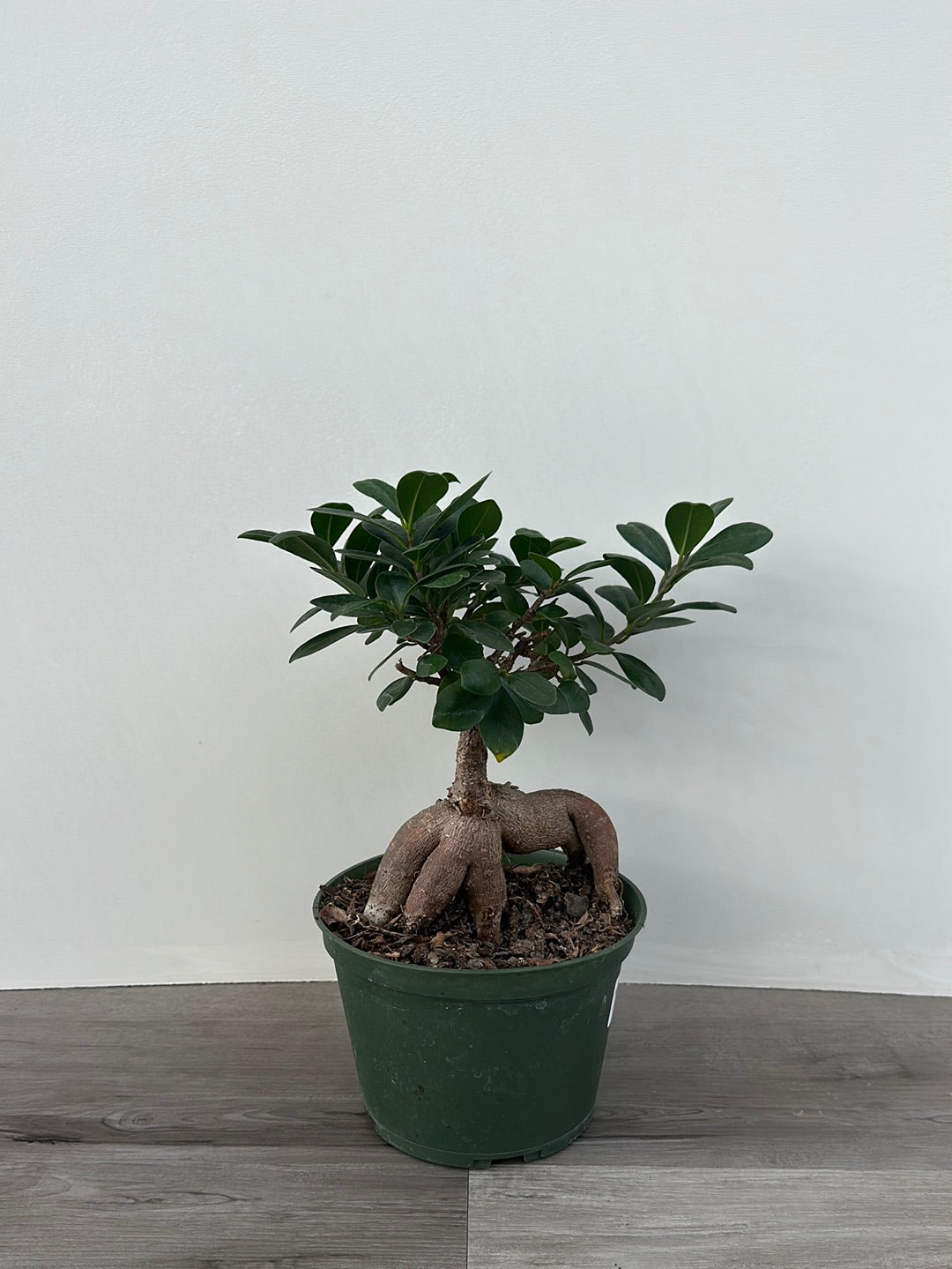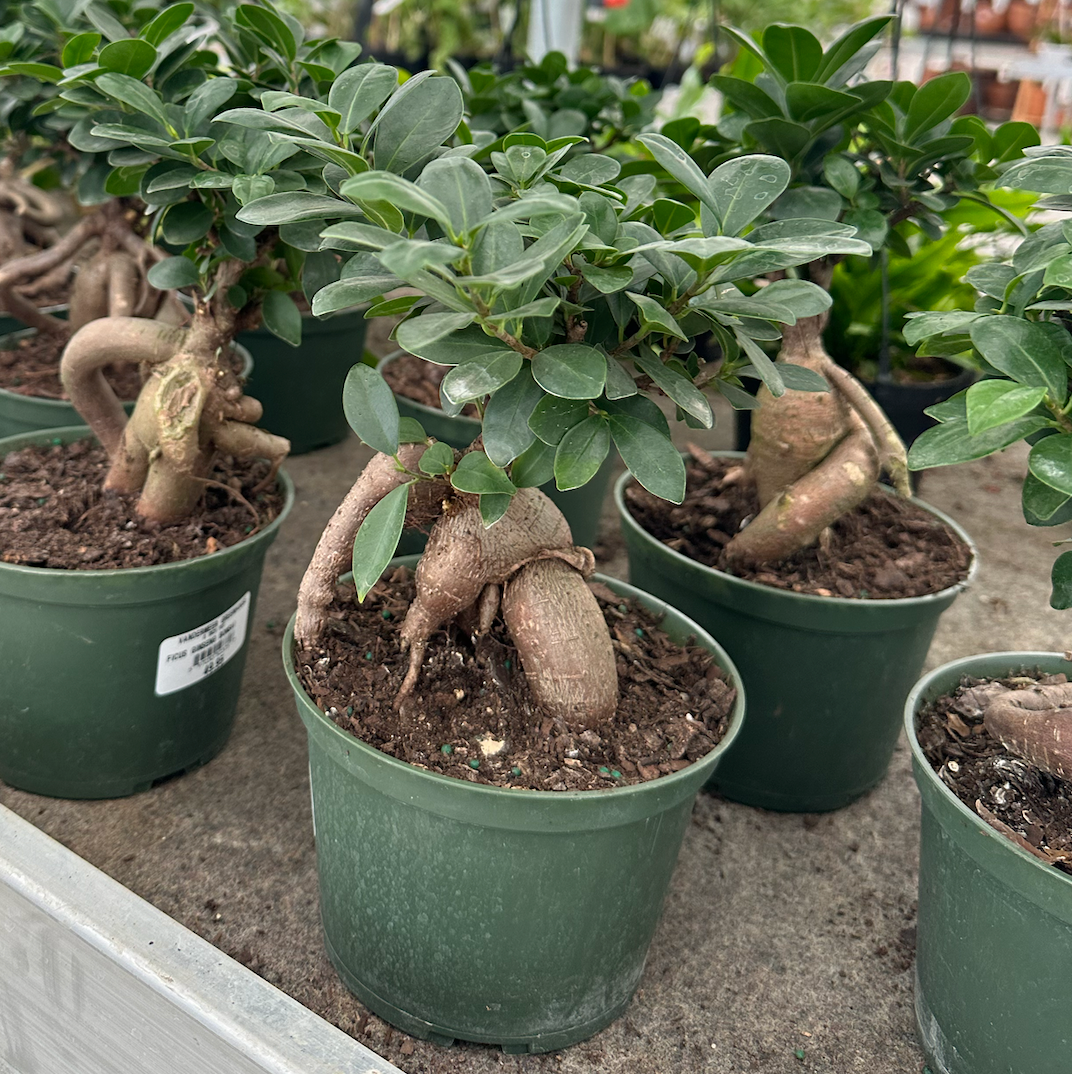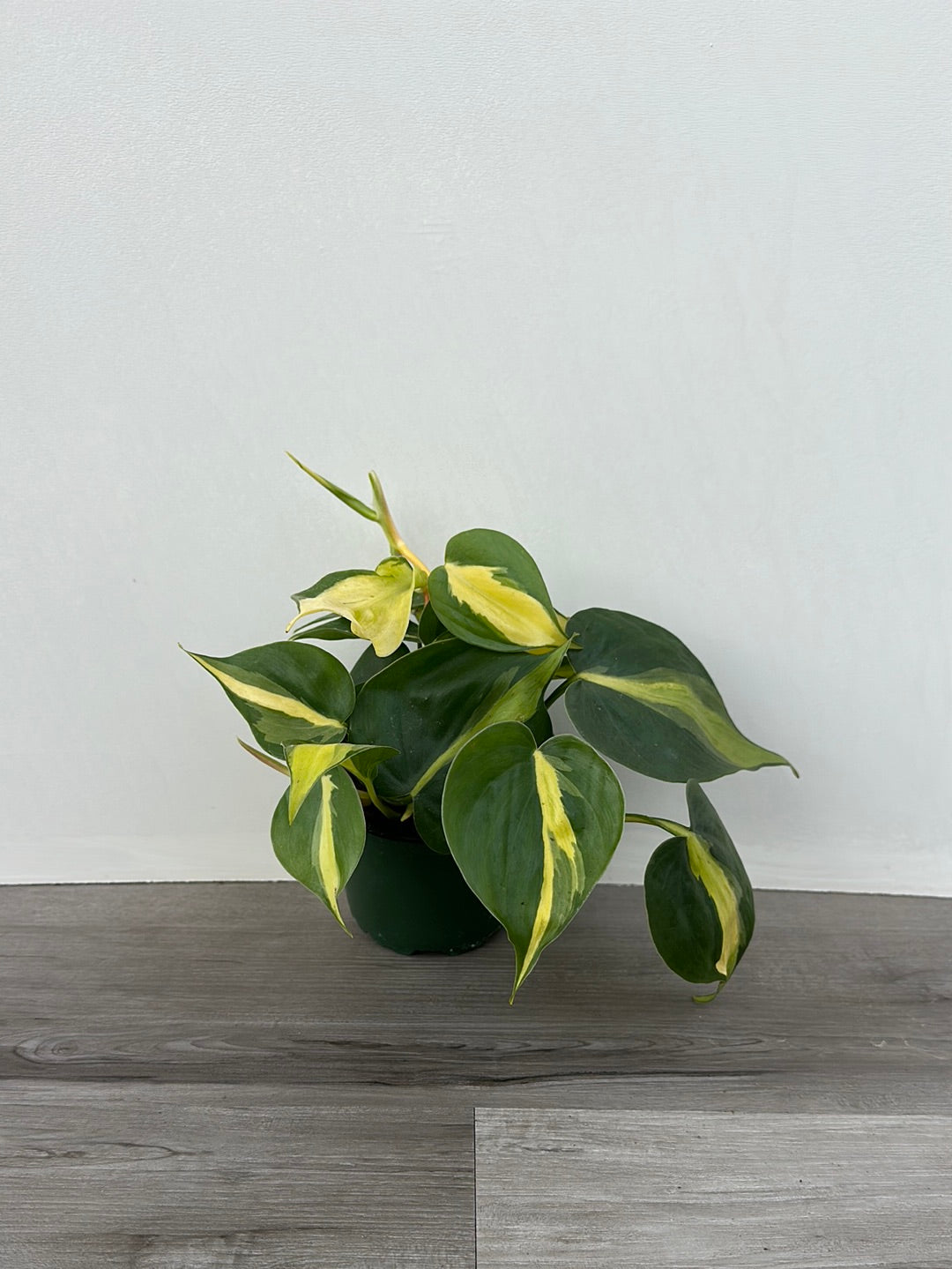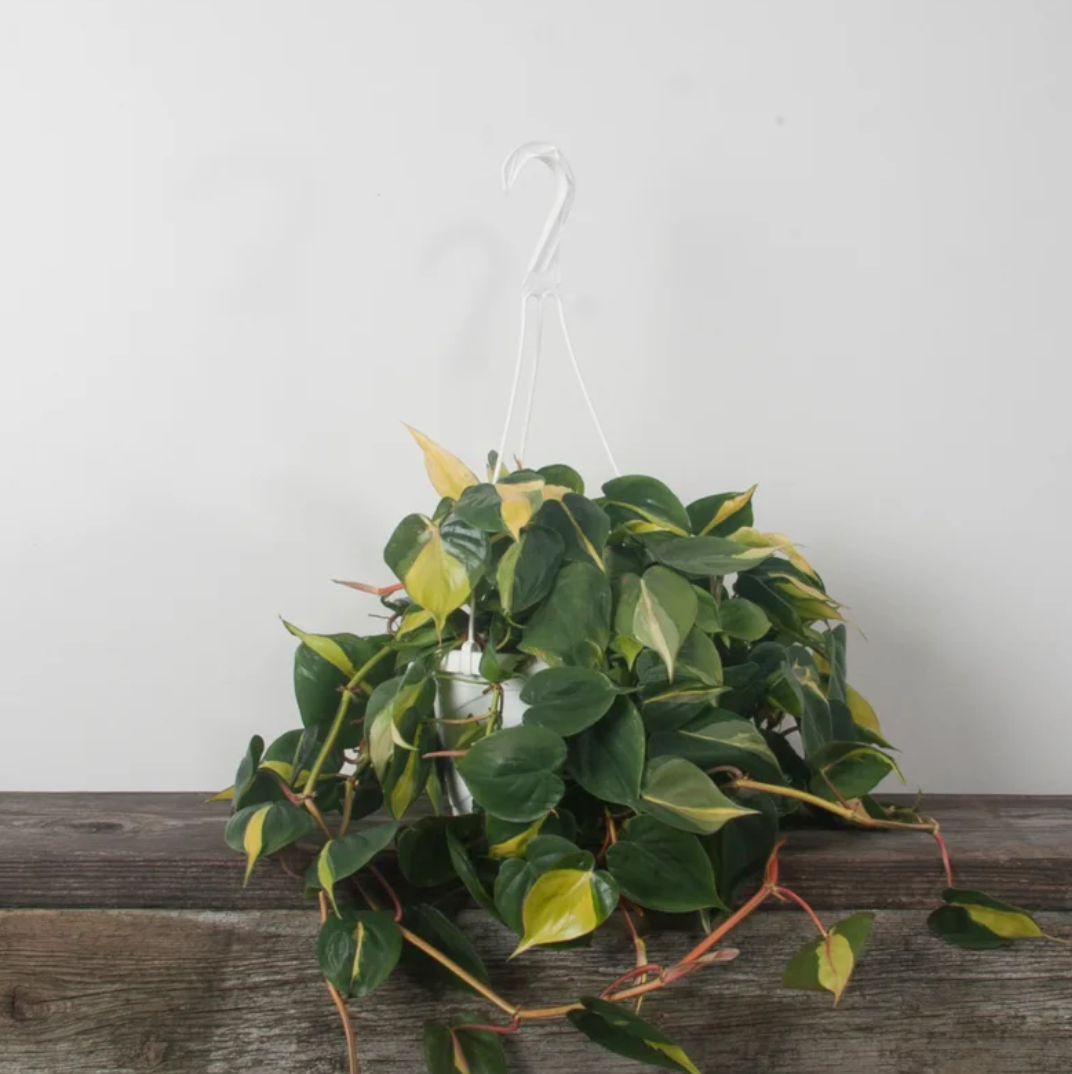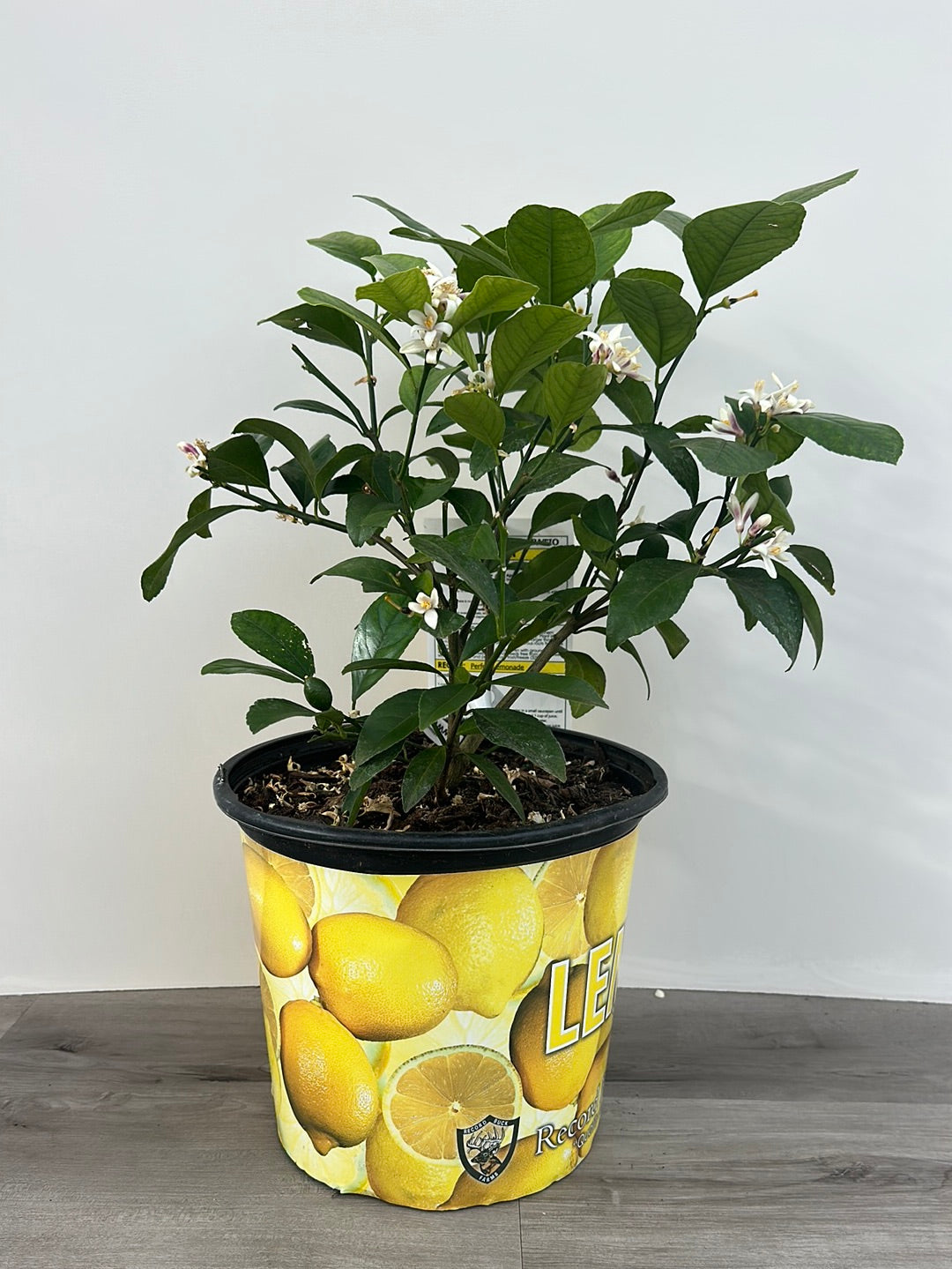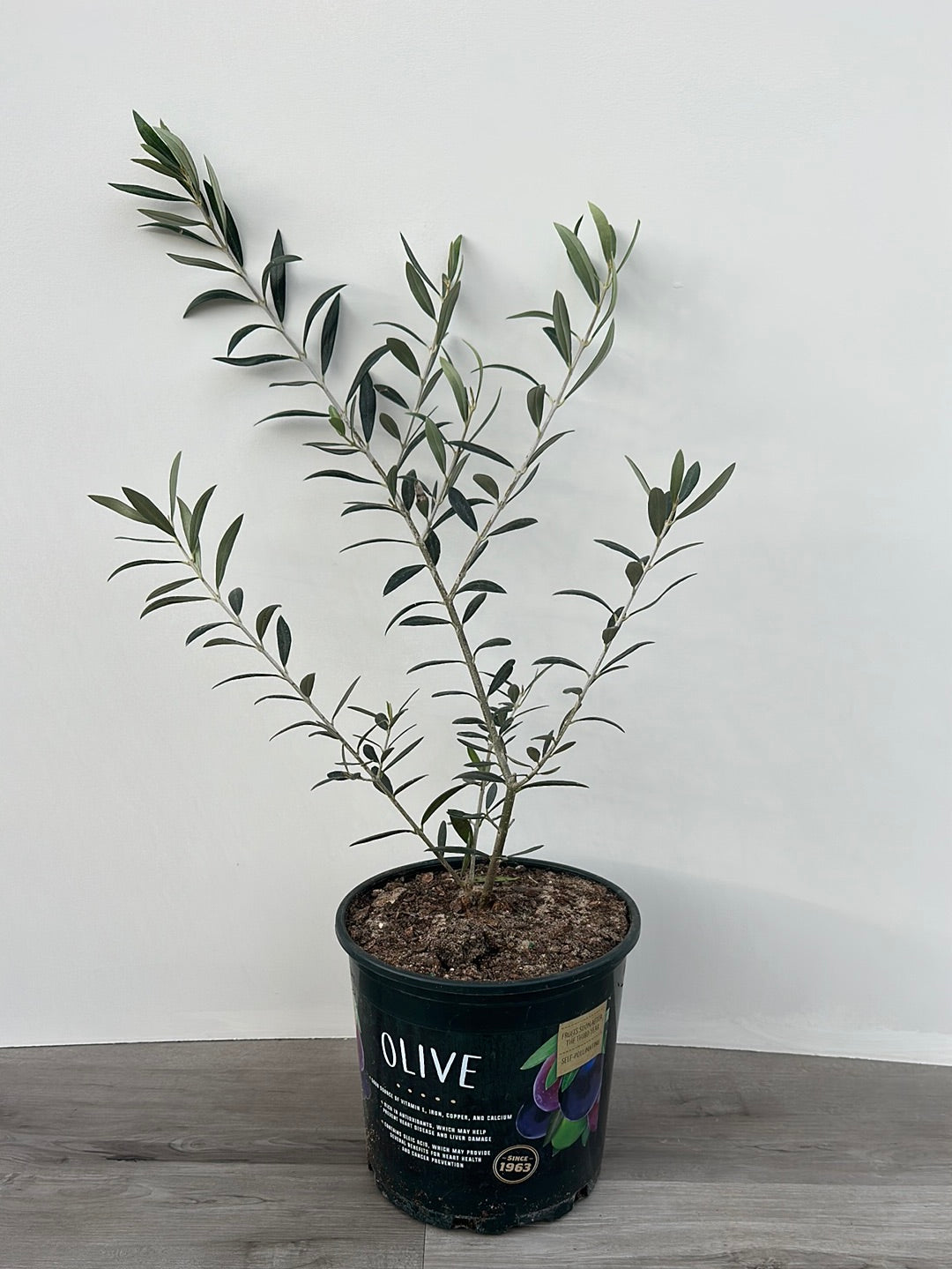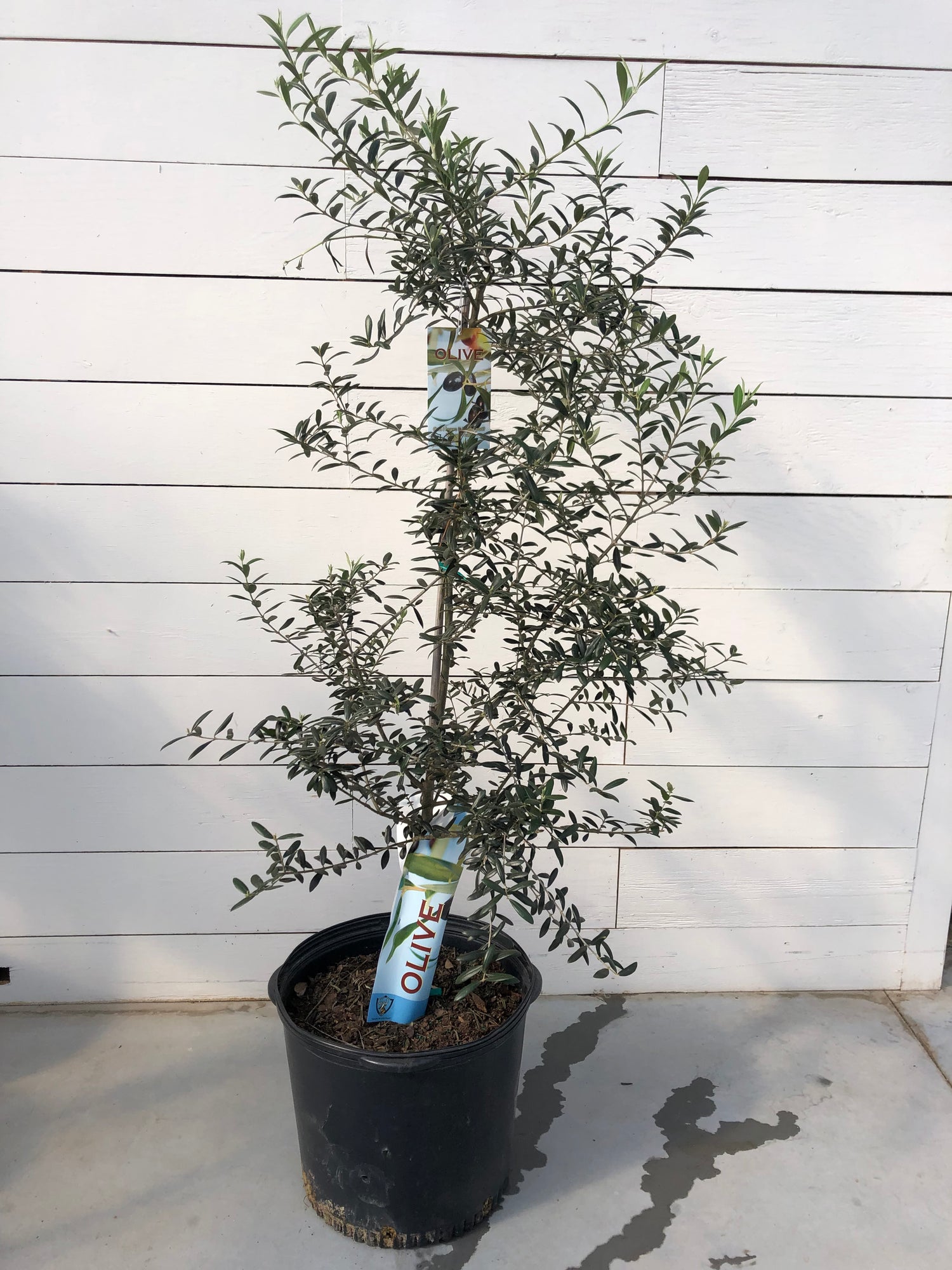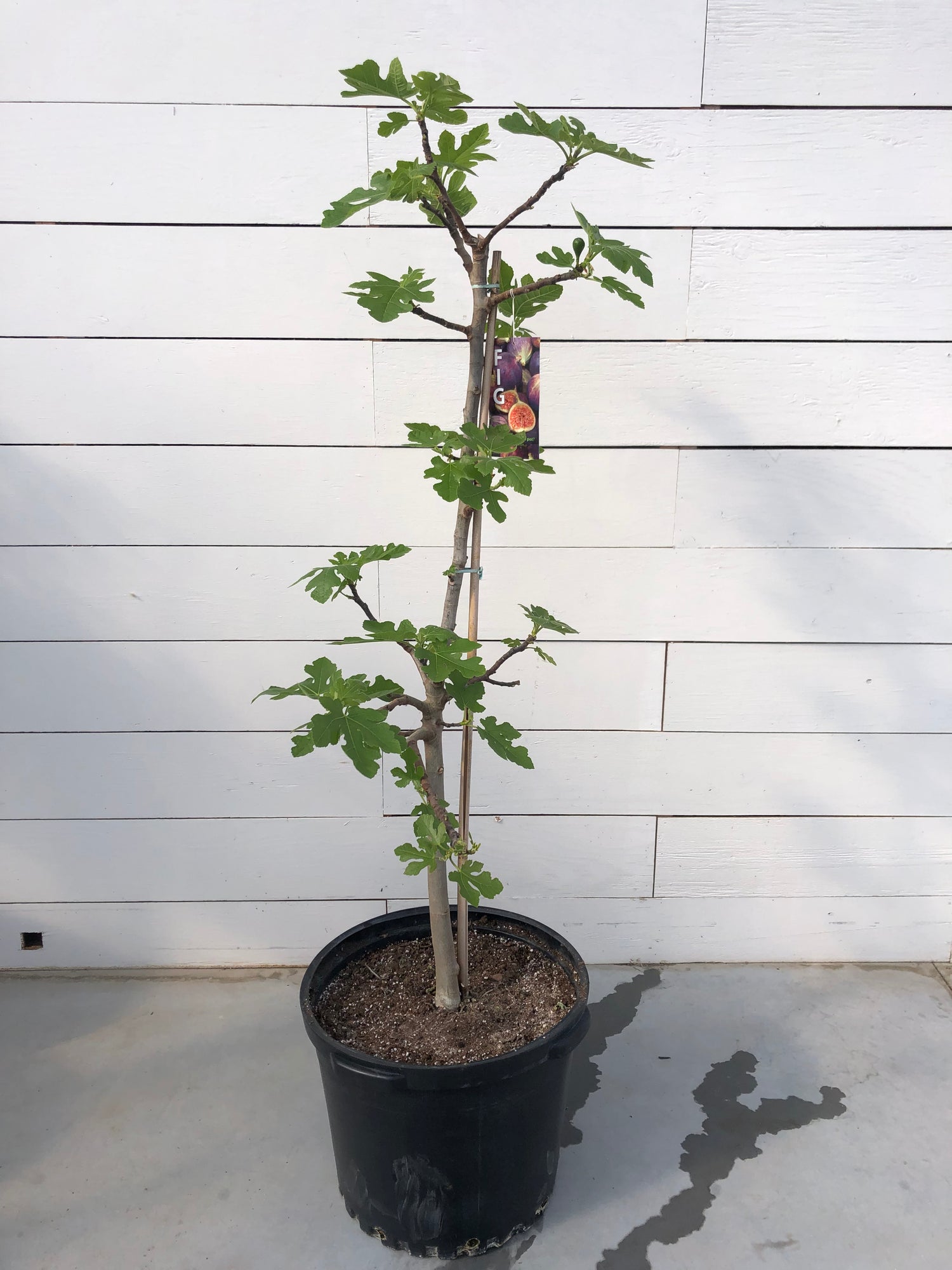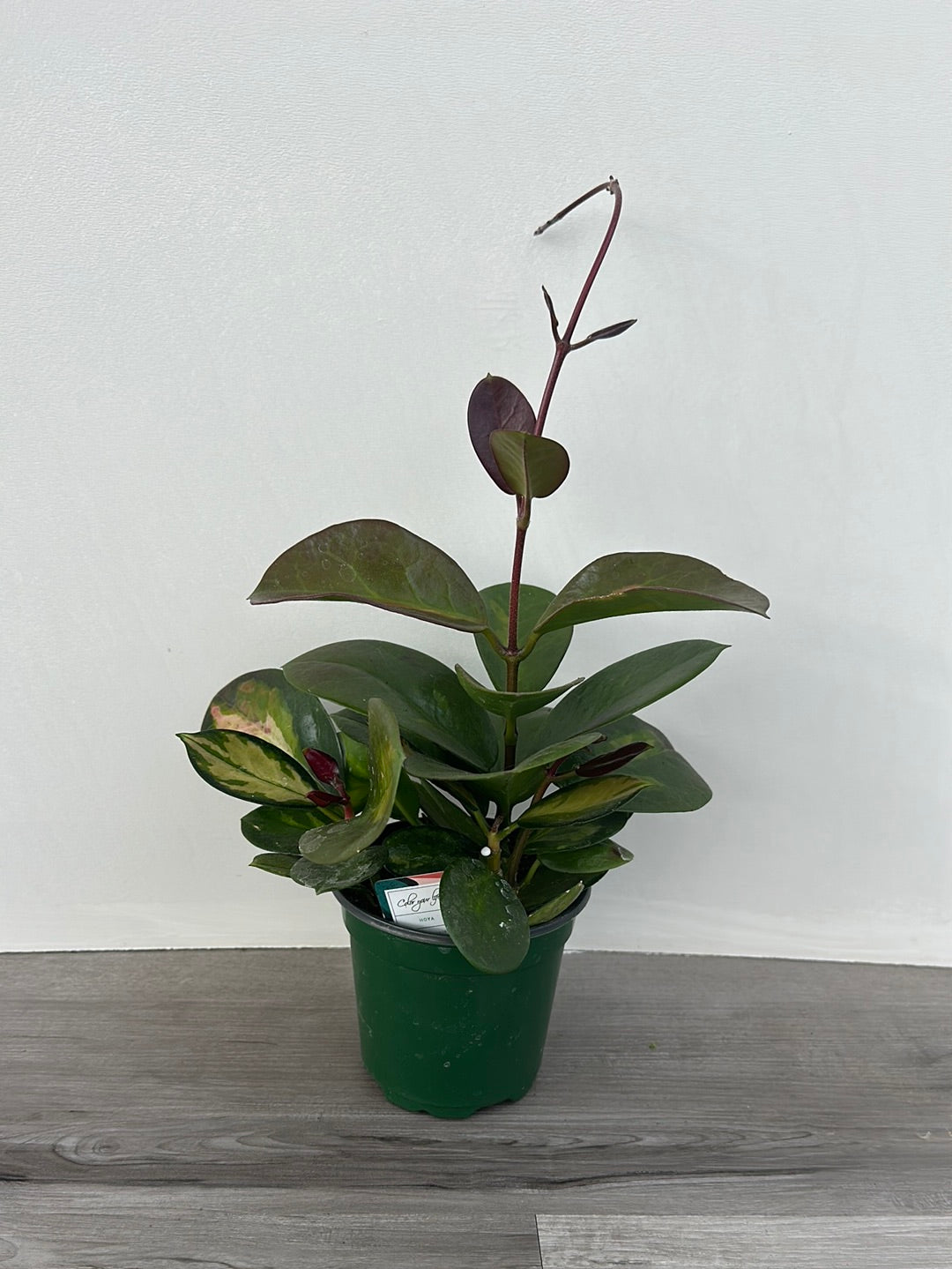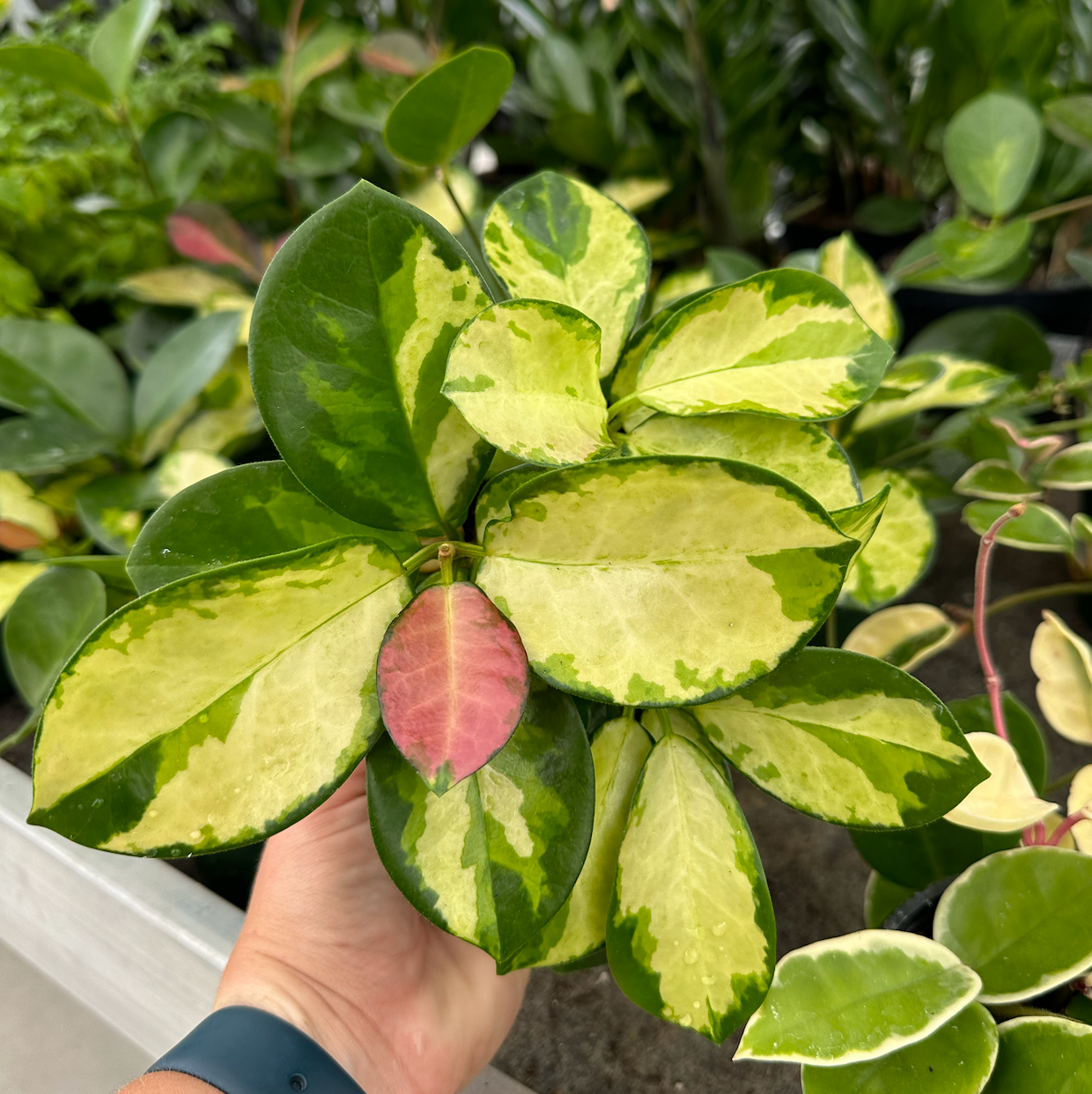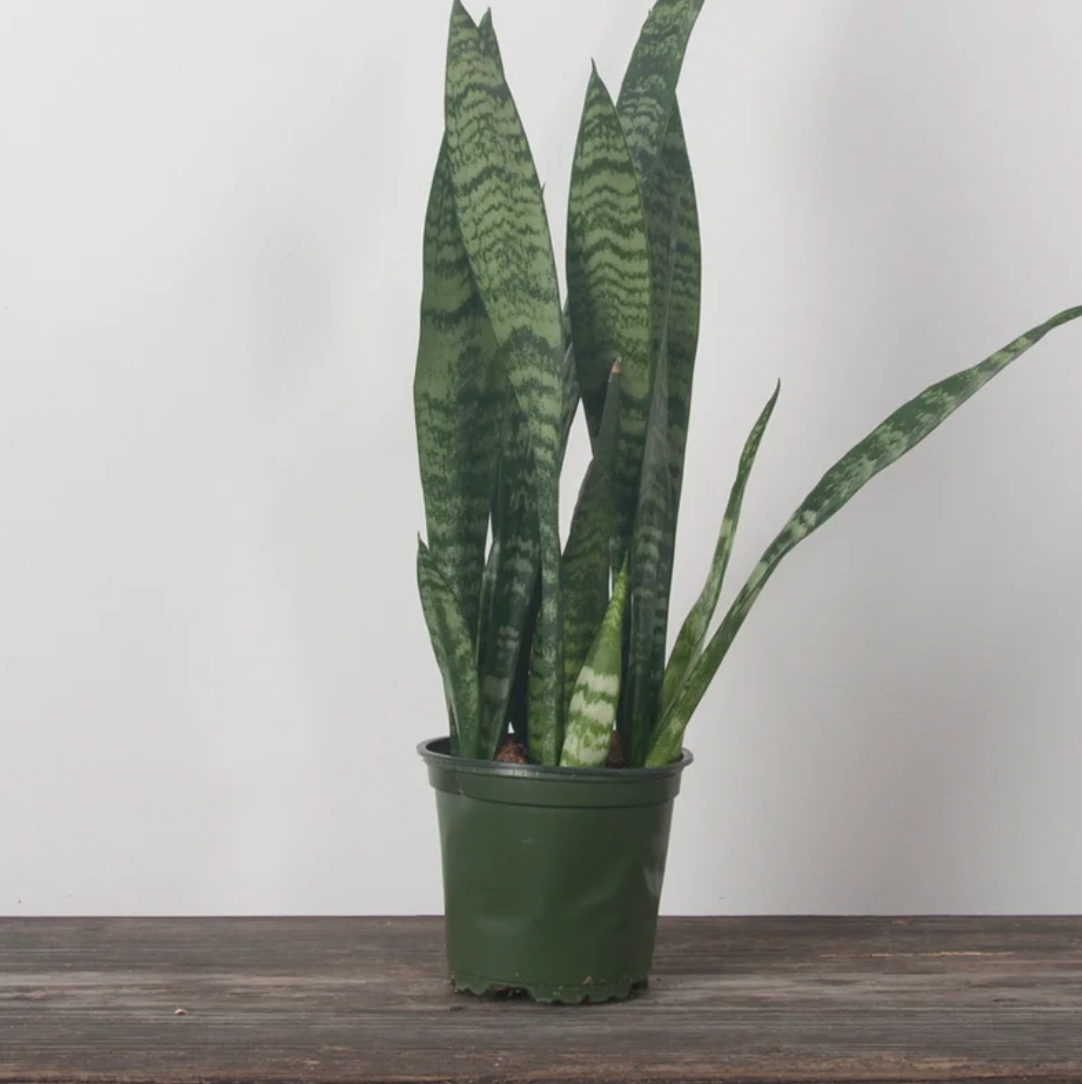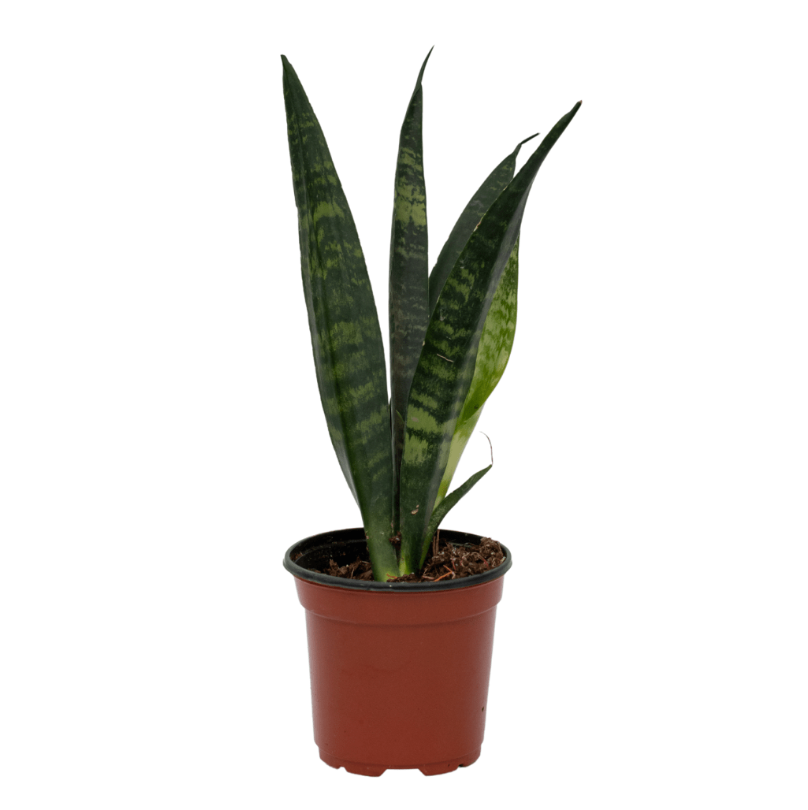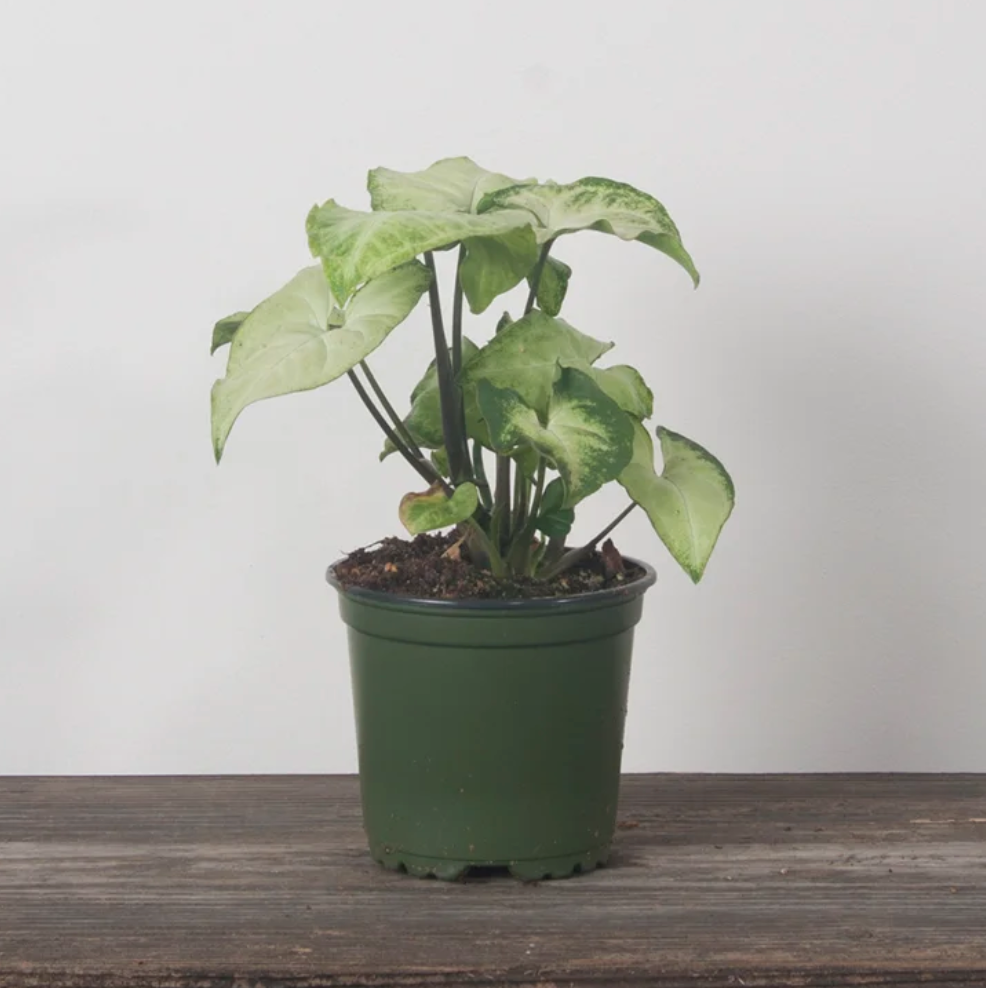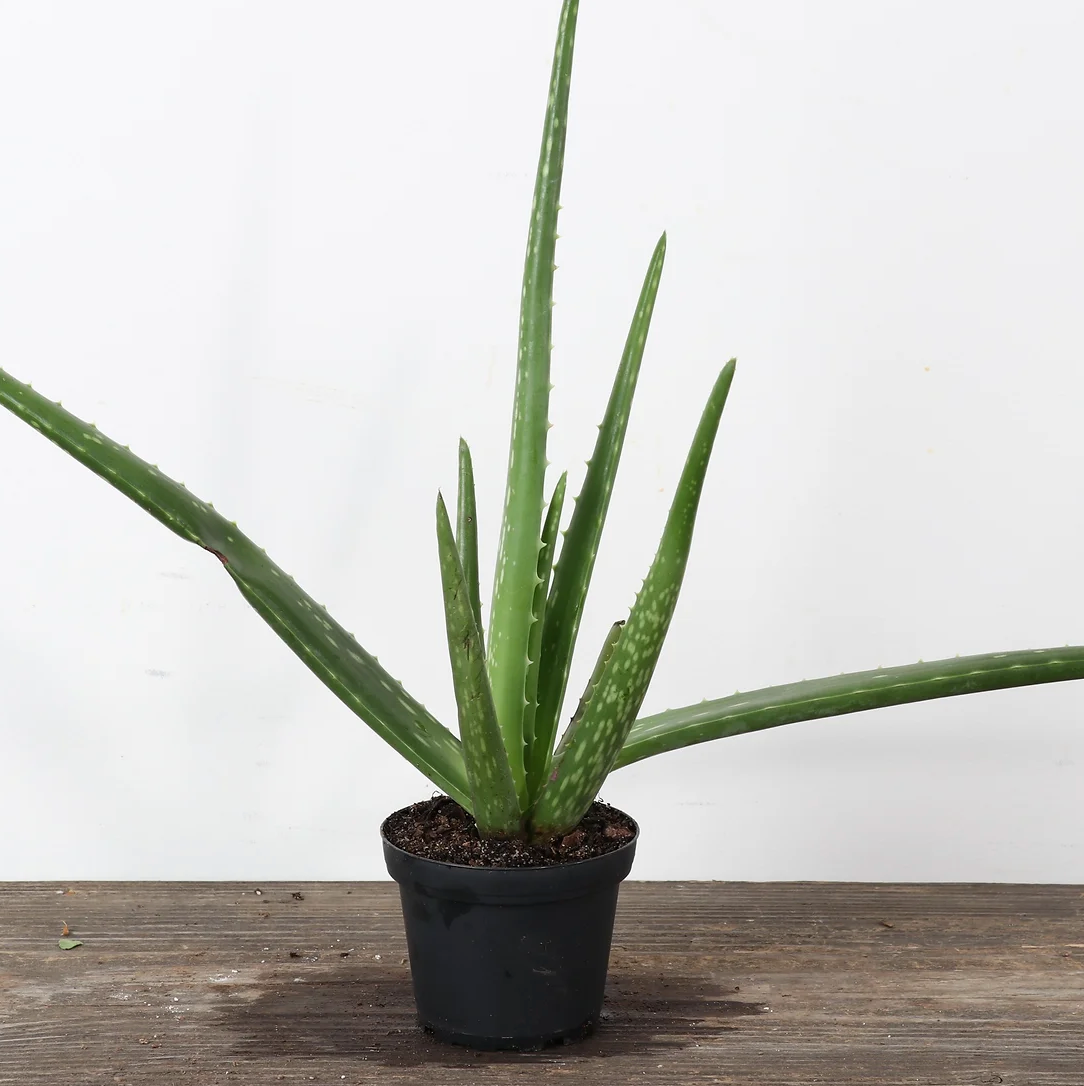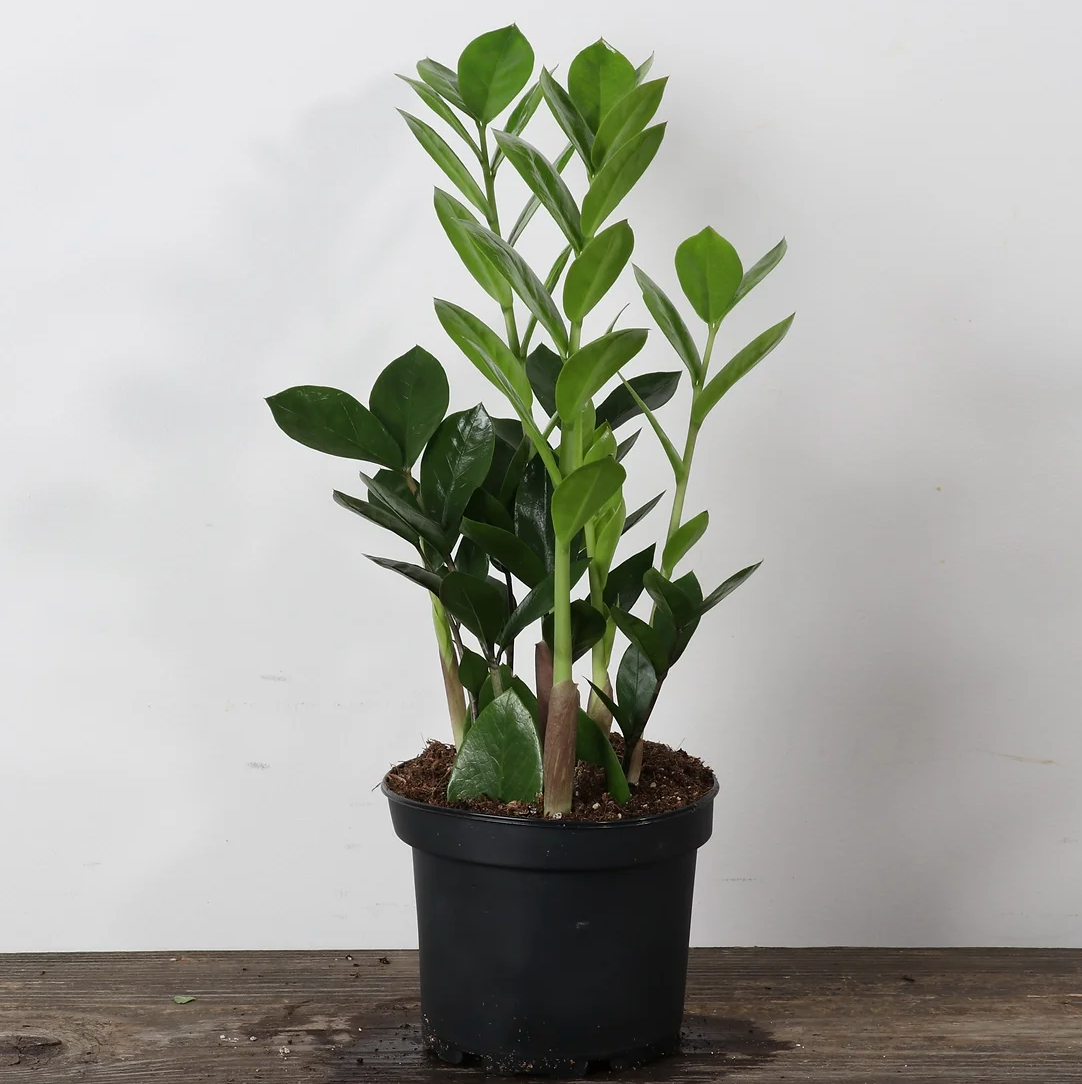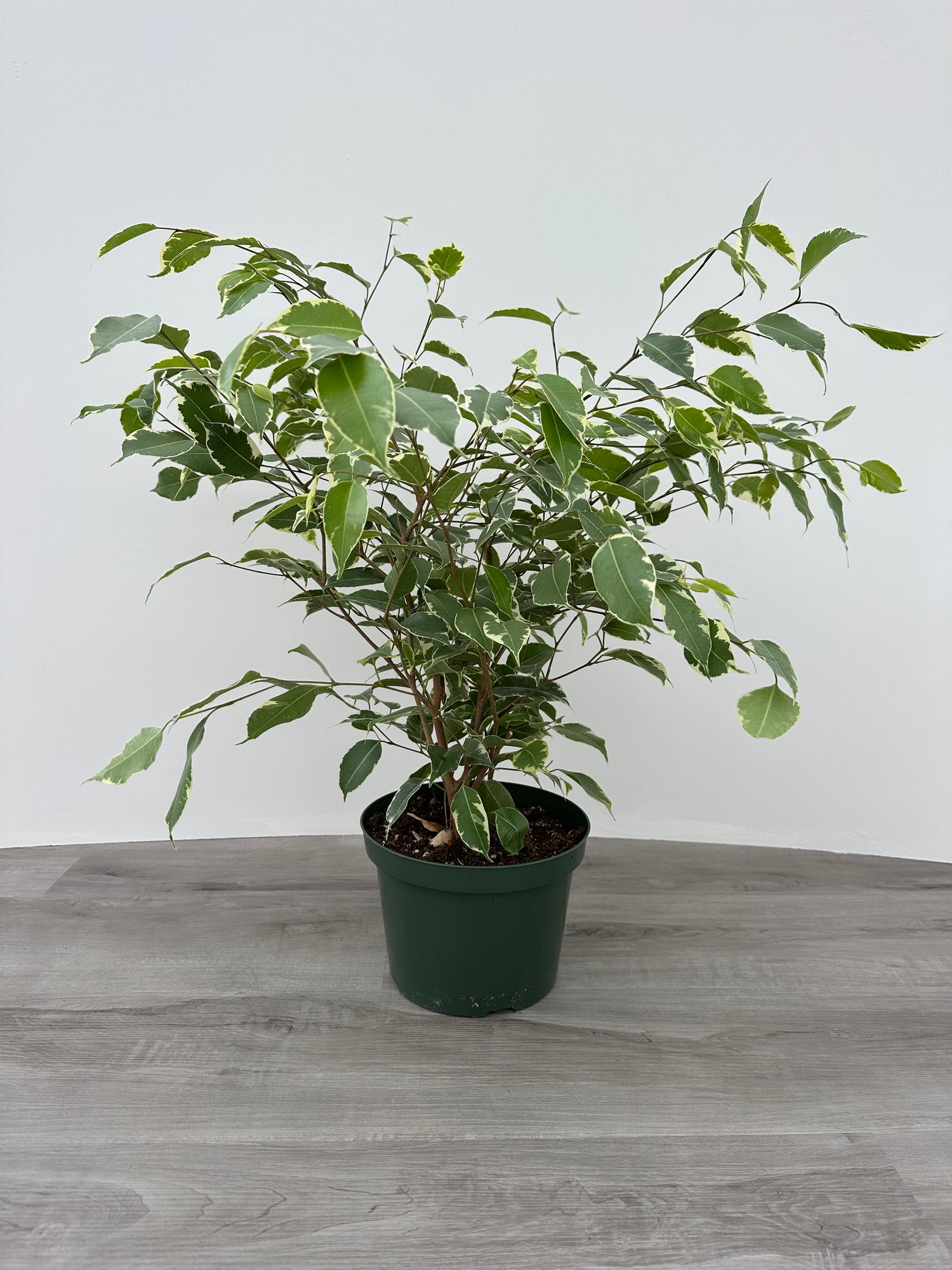94 products
94 products
Sort by:
Mothers Day
The Ficus Ginseng Bonsai is a distinctive bonsai variety featuring a thick, twisted trunk with shiny, oval-shaped, and vibrant green leaves, creating an artistic and captivating appearance.
Light Requirement: Preferring bright, indirect light, place the Ficus Ginseng Bonsai in a location with filtered sunlight. It can tolerate lower light conditions but benefits from exposure to moderate to bright light for optimal growth.
Watering Requirement: Allow the soil to partially dry between waterings, and water thoroughly. Ficus Ginseng Bonsai prefers slightly moist but well-draining soil. Avoid overwatering to prevent root rot.
Mature Height: Maintaining a compact size, the Ficus Ginseng Bonsai is ideally suited for bonsai cultivation and can reach a height of 8 to 12 inches (20 to 30 cm) with regular pruning to maintain its intricate form.
Pink Princess Philodendron is a striking hybrid featuring dark green and pink variegated leaves, adding a touch of elegance to indoor spaces.
Light Requirement: Preferring bright, indirect light, place the plant in filtered sunlight or partial shade, avoiding prolonged exposure to direct sunlight.
Watering Requirement: Keep the soil consistently moist, watering when the top inch feels slightly dry, while avoiding both excessive dryness and waterlogged conditions.
Mature Height: With a climbing habit, Pink Princess Philodendron can reach varying heights; regular pruning helps maintain a more compact and aesthetically pleasing shape.
The Philodendron Brasil is a vibrant and popular cultivar with heart-shaped leaves showcasing a striking mix of green and yellow hues, creating a visually appealing and dynamic indoor plant.
Light Requirement: Thriving in bright, indirect light, place the Philodendron Brasil in a location with filtered sunlight or partial shade. It can tolerate lower light conditions but benefits from exposure to moderate to bright light for optimal growth and coloration.
Watering Requirement: Allow the soil to partially dry between waterings, and water thoroughly. The Philodendron Brasil prefers slightly moist but well-draining soil. Be cautious not to overwater to prevent root issues.
Mature Height: With a climbing or trailing habit, the Philodendron Brasil can reach varying lengths, making it suitable for hanging baskets or climbing supports. Regular pruning helps control its size and promotes a bushy appearance.
The Myrtle Ball Topiary is an elegant and classic ornamental plant crafted into a spherical shape, featuring glossy green leaves, creating a refined and structured appearance.
Light Requirement: Thriving in bright, indirect light, place the Myrtle Ball Topiary in a location with filtered sunlight or partial shade. It can tolerate lower light conditions but benefits from exposure to moderate to bright light for optimal growth.
Watering Requirement: Allow the soil to partially dry between waterings, and water thoroughly. The Myrtle Ball Topiary prefers slightly moist but well-draining soil. Avoid overwatering to maintain the health of the plant.
Mature Height: Maintaining its spherical form, the Myrtle Ball Topiary typically reaches a height and diameter of around 1 to 2 feet (30 to 60 cm). Regular pruning can help preserve the topiary shape and promote a neat appearance.
Indoor Citrus Plants, such as the popular Meyer Lemon or Key Lime, are aromatic and featuring glossy green leaves and fragrant white flowers that may develop into small, edible citrus fruits.
Light Requirement: Thriving in bright, direct sunlight, place indoor citrus plants in a location with ample natural light. They benefit from at least 8 hours of sunlight per day, making them suitable for sunny windowsills.
Watering Requirement: Keep the soil consistently moist but well-draining. Water when the top inch of the soil feels slightly dry. Ensure proper drainage to prevent waterlogged conditions, as citrus plants are sensitive to overwatering.
Mature Height: With a compact growth habit, indoor citrus plants can reach varying heights, commonly staying between 2 to 4 feet (60 to 120 cm). Pruning helps shape the plant and encourages healthy fruit production.
**Online orders will be charged delivery for 10,15 & 25gal. trees.**
Olive trees grow well in full, bright and consistent sunlight. Your plant will be happiest in a large, south-facing window.
Choose a spot in your home where it will get at least 6 hours of direct sunlight, ideally more. While south-facing windows are the best, east- or west-facing windows that are completely unobstructed will be adequate. Avoid letting the leaves press up against the glass of a window as this might cause the foliage to burn.
Pick a spot for your olive tree and keep it there — it will give the plant the best chance to adapt to the lighting conditions. If you have a bright and sunny outdoor space, bring it out for the summer to encourage more growth.
15 Gal. Pot 7'-8' tall from the ground.
**Online orders will be charged delivery fee for 10,15 & 25gal. trees.**
Fig trees like to receive a min of 6 hours of indirect/direct light every day. Placing the tree in a south facing window or conservatory is ideal. The more light your fig tree receives the more fruit it will produce.
15 Gal. Pot 5-7' tall from ground.
Hoya Australis Variegated, a captivating member of the Hoya family, features trailing vines adorned with succulent, variegated leaves, showcasing creamy-white edges that add a touch of elegance to indoor spaces.
Light Requirement: Thriving in bright, indirect light, place the Hoya Australis Variegated in a location with filtered sunlight or partial shade. It can tolerate lower light conditions but benefits from exposure to moderate to bright light for optimal growth and variegation.
Watering Requirement: Allow the soil to dry out partially between waterings, and water thoroughly. The Hoya Australis Variegated prefers a well-draining mix. Be cautious not to overwater, as Hoyas are susceptible to root rot.
Mature Height: With a trailing growth habit, Hoya Australis Variegated can reach varying lengths, often cascading down from hanging baskets. Regular pruning helps control its size and promotes a fuller appearance.
The Xanadu Philodendron is a striking tropical plant known for its lush, deeply lobed leaves, creating a dense and attractive foliage. It adds a touch of elegance and a tropical feel to indoor spaces.
Light Requirement: Thriving in bright, indirect light, place the Xanadu Philodendron in a location with filtered sunlight or partial shade. It can tolerate lower light conditions but benefits from exposure to moderate to bright light for optimal growth.
Watering Requirement: Allow the top inch of the soil to dry out between waterings, and water thoroughly. The Xanadu Philodendron prefers slightly moist but well-draining soil. Avoid overwatering to prevent root issues.
Mature Height: With a bushy growth habit, the Xanadu Philodendron typically reaches a height of around 2 to 4 feet (60 to 120 cm) indoors. Regular pruning helps maintain its compact form and encourages healthy new growth.
The Snake Plant, or Sansevieria, is a compact and resilient indoor plant characterized by upright, sword-shaped leaves with variegated patterns, making it an ideal choice for low-maintenance greenery.
Light Requirement: Adaptable to various light conditions, the Snake Plant thrives in indirect light but can tolerate low light. It is versatile enough to flourish in both bright and dim environments.
Watering Requirement: Allow the soil to dry out between waterings, as Snake Plants are drought-tolerant. Water sparingly, ensuring the soil is well-draining to prevent overwatering and root rot.
Mature Height: Maintaining a modest size, the Snake Plant typically reaches a height of around 6 to 8 inches (15 to 20 cm). Its upright growth habit makes it an excellent choice for small spaces and tabletop arrangements.
Ficus Lyrata
Native to tropical western Africa, Ficus lyrata, commonly known as the fiddle-leaf fig, has very large green leaves with a leather-like texture. Although Ficus lyrata grows naturally in lowland tropical forests it can thrive in a large range of environments. Place in bright indirect sunlight, on the ground where it can grow up to 6' tall. Keep soil moist.
The Coffee Plant, or Coffea arabica, is an attractive indoor plant with glossy, dark green leaves, and in favorable conditions, it may produce fragrant white flowers and eventually coffee beans.
Light Requirement: Preferring bright, indirect light, place the Coffee Plant near a window with filtered sunlight. It can tolerate lower light conditions but benefits from exposure to moderate to bright light.
Watering Requirement: Keep the soil consistently moist but not waterlogged. Water when the top inch of the soil feels slightly dry. Avoid both drought stress and overwatering to support healthy growth.
Mature Height: With a slow growth rate, the Coffee Plant can reach a height of 2 to 4 feet (60 to 120 cm) indoors. Pruning can help maintain a bushy shape, and the plant may produce coffee cherries under optimal conditions.
Decor pot not included.
Helleborus, commonly known as the Lenten Rose or Christmas Rose, is a captivating indoor plant celebrated for its elegant, nodding flowers that bloom in various shades, providing a welcome burst of color during the winter months.
Light Requirement: Thriving in bright, indirect light, place the Helleborus in a location with filtered sunlight or partial shade. It can tolerate lower light conditions but benefits from exposure to moderate to bright light for optimal flowering.
Watering Requirement: Keep the soil consistently moist but not waterlogged. Water when the top inch of the soil feels slightly dry. Helleborus prefers well-draining soil to prevent root rot.
Mature Height: With a compact growth habit, Helleborus typically reaches a height of around 1 to 2 feet (30 to 60 cm) indoors. Regular deadheading of spent flowers can encourage continuous blooming and maintain a tidy appearance.
African violets are a herbaceous flowering plant more commonly kept as a houseplant in Northern Climates.
It's fleshy leaves have a fine, hair-like fur on them. Blooms produce five petals and are velvety to the touch. Vibrant colours are
Available in purple, pink, and white.
CAUTION: Do Not over water, highly susceptible to root rot. Prefers a pot with good drainage/ soil.
Aglaonema, also known as Chinese Evergreen, is an attractive and versatile indoor plant with glossy, lance-shaped leaves showcasing various shades of green, silver, and red.
Light Requirement: Adaptable to low light conditions, Aglaonema thrives in indirect, moderate to low light, making it an excellent choice for spaces with limited sunlight.
Watering Requirement: Allow the soil to partially dry between waterings, and water thoroughly when needed. Avoid overwatering, as Aglaonema prefers slightly moist but not waterlogged soil.
Mature Height: Typically reaching 1 to 3 feet (30 to 90 cm), Aglaonema maintains a compact and bushy growth habit. Regular pruning can help control its size and promote a fuller appearance.
Goldfish Plant (Nematanthus gregarius) is an attractive and unique indoor plant, known for its glossy, dark green leaves and bright orange, tubular flowers that resemble goldfish, adding a whimsical touch to any space.
Light Requirement: Goldfish Plant thrives in bright, indirect light. It benefits from plenty of light to encourage blooming but should be protected from direct sunlight to prevent leaf scorch.
Watering Requirement: Keep the soil consistently moist but not waterlogged. Water thoroughly when the top inch of soil feels dry. Goldfish Plant enjoys a humid environment, so regular misting or the use of a humidity tray is beneficial.
Mature Height: Goldfish Plant has a trailing or arching growth habit, making it perfect for hanging baskets or elevated planters where its cascading foliage and flowers can be displayed.
Ficus Burgundy, a cultivar of the Ficus elastica, is a striking indoor plant with large, glossy, burgundy-colored leaves, creating a dramatic and sophisticated aesthetic.
Light Requirement: Thriving in bright, indirect light, place the Ficus Burgundy in a location with filtered sunlight or partial shade. It can tolerate lower light conditions but benefits from exposure to moderate to bright light for optimal leaf coloration.
Watering Requirement: Allow the soil to partially dry between waterings, and water thoroughly. Ficus Burgundy prefers slightly moist but well-draining soil. Be cautious not to overwater to prevent root issues.
Mature Height: With a tree-like growth habit, the Ficus Burgundy can reach varying heights, commonly growing up to 6 to 10 feet (180 to 300 cm) indoors. Regular pruning can help maintain a compact and bushy shape.
Aloe Vera is a low-maintenance and soothing succulent, well-known for its fleshy, green leaves filled with a cooling gel often used for its healing and moisturizing properties.
Light Requirement: Aloe Vera thrives in bright, indirect to direct sunlight. It does best near a sunny window and can tolerate some direct sun, making it perfect for well-lit indoor spaces.
Watering Requirement: Allow the soil to dry out completely between waterings. Aloe Vera prefers dry conditions and is highly drought-tolerant. Overwatering should be avoided to prevent root rot.
Mature Height: Typically reaching 12 to 24 inches (30 to 60 cm) in height, Aloe Vera forms a rosette of upright leaves and may produce tall flower spikes with yellow or orange blooms under ideal conditions.
Zamia Palm, belonging to the genus Zamia, is an ancient and cycad-like plant with a unique crown of pinnate, feather-like fronds, and a stout, often subterranean trunk.
Light Requirement: Preferring bright, indirect light, place the Zamia Palm in a location with filtered sunlight. It can tolerate lower light conditions but benefits from exposure to moderate to bright light.
Watering Requirement: Allow the soil to partially dry between waterings, and water sparingly. Zamia Palms are drought-tolerant and sensitive to overwatering, so a well-draining soil mix is essential.
Mature Height: Reaching a mature height of 2 to 4 feet (60 to 120 cm), the Zamia Palm is a slow grower. Regularly remove any yellowing or damaged fronds to maintain a neat appearance and encourage new growth.
* Photos are in a 6" Pot
Prayer plants ( Maranta ) are low-growing, spreading plants that thrive best when provided with greenhouse-like conditions, including warm, moist, gentle airflow, and plenty of fertilizer. Plants that are kept too cool or too dry are likely to lose their leaves or suffer from fungal infections that can cause the plant to die from root rot or collapse.
Variegated Benji Bush Ficus is a captivating indoor plant characterized by its stunning variegated foliage, boasting a mix of green and cream-colored leaves that bring elegance and charm to any indoor setting.
Light Requirement: This plant thrives in bright, indirect light, making it ideal for locations with filtered sunlight or partial shade. While it can tolerate lower light conditions, exposure to moderate to bright light is recommended to enhance the variegation and overall health of the plant.
Watering Requirement: Maintain slightly moist but well-draining soil by allowing it to partially dry between waterings. Water thoroughly when needed, ensuring not to overwater to prevent potential root issues.
Mature Height: With a compact and bushy growth habit, the Variegated Benji Bush Ficus typically reaches a height of 3 to 6 feet (90 to 180 cm) indoors. Regular pruning can help maintain its desired shape and size, ensuring a lush and vibrant appearance.
Shamrock Iron Cross is a charming plant admired for its distinctive foliage and delicate flowers. It is commonly referred to as the "Iron Cross" due to the unique marking on its leaves resembling a cross.
Light Requirement: Shamrock Iron Cross thrives in bright, indirect light but can tolerate partial shade. Avoid exposing it to direct sunlight for extended periods, as this can scorch its foliage.
Watering Requirement: Keep the soil consistently moist but not waterlogged. Water thoroughly when the top inch (2.5 cm) of soil feels dry to the touch. Ensure proper drainage to prevent root rot.
Mature Height: Shamrock Iron Cross typically grows to a height of 6 to 8 inches (15 to 20 cm), forming a compact mound of foliage. Regular pinching back of stems can help maintain its compact shape and encourage bushier growth.


